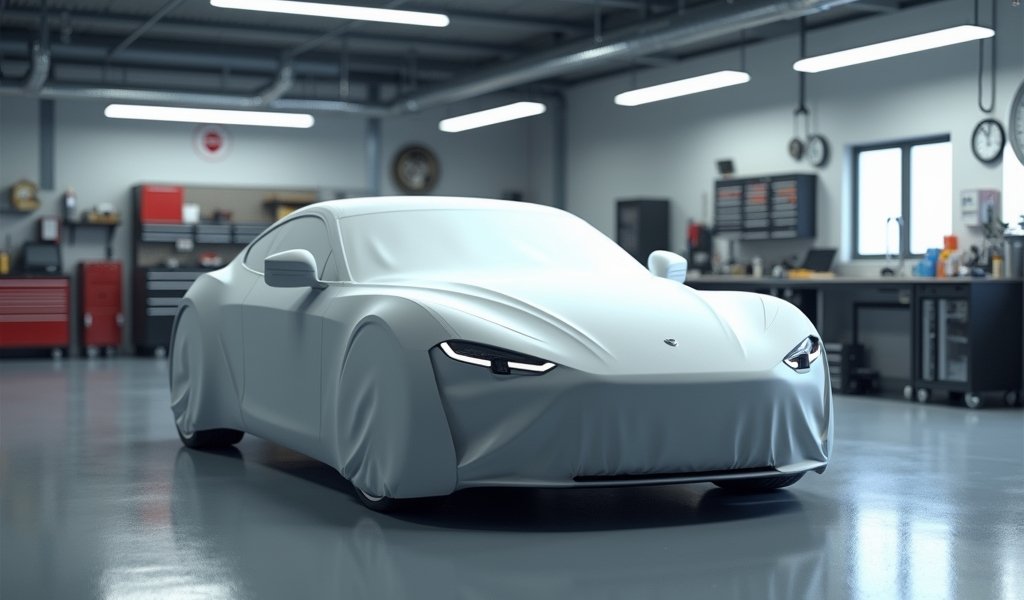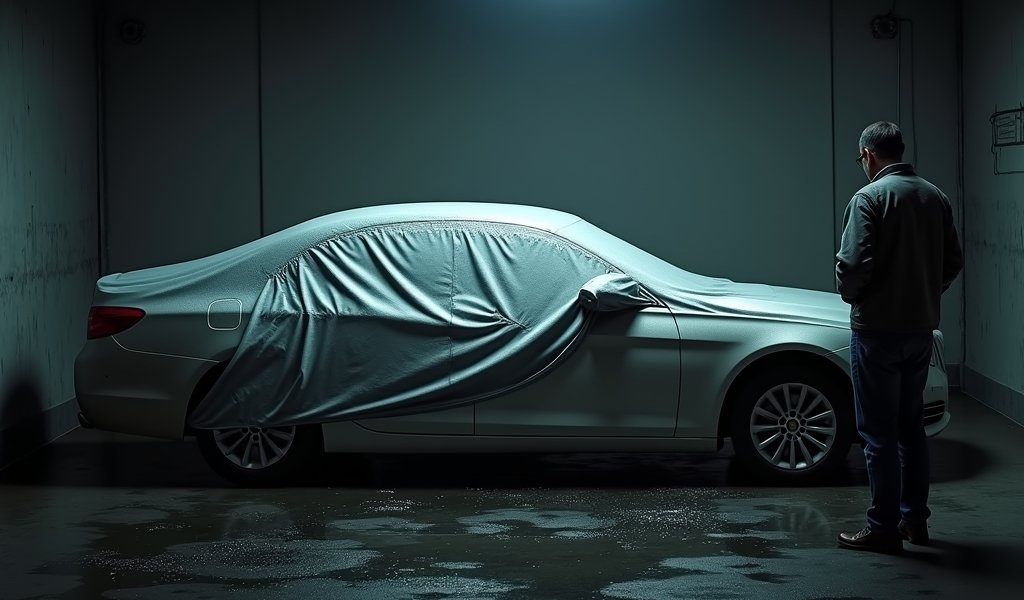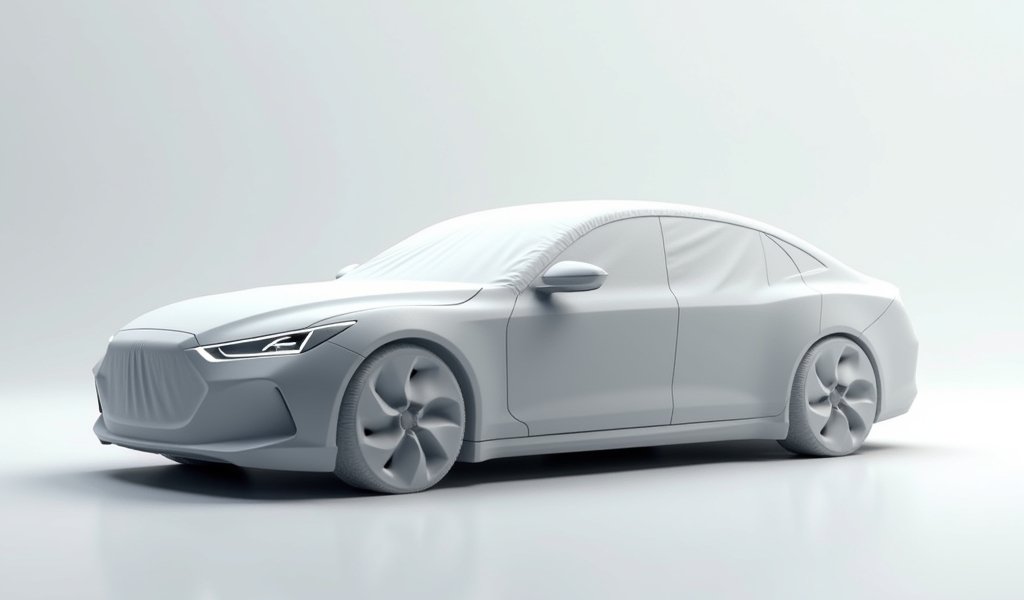Overview
This article evaluates five top breathable car covers, explaining why breathability prevents moisture damage and extends vehicle life. The WeatherShield HP leads premium options while more affordable alternatives like CarCovers.com Platinum Shield and Budge Lite offer good protection for different needs and budgets, with all requiring proper maintenance to function effectively.
Table of Contents
- Why Breathability Matters for Your Car Cover
- What Makes a Car Cover Truly Breathable?
- Key Features to Look for in Quality Breathable Covers
- Top Pick #1: WeatherShield HP by Covercraft
- Top Pick #2: CarCovers.com Platinum Shield
- Top Pick #3: Budge Lite Indoor Car Cover
- Top Pick #4: Leader Accessories Platinum Guard
- Top Pick #5: OxGord Executive Storm-Proof Cover
- Head-to-Head Comparison
- Maintenance Tips for Breathable Car Covers
- Conclusion
- Frequently Asked Questions
Why Breathability Matters for Your Car Cover
After 15 years working in auto body repair, I’ve seen what happens when folks use the wrong car cover. Trust me, a breathable car cover isn’t just a fancy upgrade—it’s essential protection for your vehicle’s health and appearance.
When you cover your car with non-breathable material, you’re essentially creating a moisture trap. Your vehicle naturally releases vapor, even when parked. Without proper breathability, that moisture has nowhere to go, leading to a humid microenvironment that’s paradise for rust and mildew.
The consequences? Paint damage, accelerated corrosion, and that musty smell that’s nearly impossible to eliminate from upholstery. I’ve had customers spend thousands on repainting jobs that could have been avoided with a $150 breathable cover.
A quality breathable cover works like your favorite performance jacket—it keeps external moisture out while allowing internal humidity to escape. This balance is crucial for maintaining your vehicle year-round, especially during seasonal transitions when temperature fluctuations cause more condensation.
What Makes a Car Cover Truly Breathable?

Breathable car covers employ sophisticated material technology that’s actually fascinating when you understand it. The best covers use fabrics with microscopic pores—small enough to block water droplets but large enough to let water vapor molecules pass through.
Think of it like Gore-Tex for your vehicle. These materials typically incorporate multiple layers, each serving a specific purpose in the moisture management system. The science behind this is well-documented in material science research on breathable fabrics.
Modern breathable covers often use one of these primary technologies:
- Microporous films bonded to woven fabrics
- Hydrophobic (water-repelling) outer layers with hydrophilic (moisture-attracting) inner layers
- Advanced polymer blends that react dynamically to moisture levels
When shopping for breathable covers, look for specific mention of these technologies rather than vague marketing terms like “ventilated” or “air-flow design.” True breathability comes from the material composition itself, not just a few strategically placed vents.
Key Features to Look for in Quality Breathable Covers
After evaluating dozens of car covers, I’ve identified several non-negotiable features that separate the truly protective options from the merely adequate:
Material Quality
The foundation of any good cover is its fabric. Multi-layered materials typically outperform single-layer options. Look for polyester blends with UV stabilizers, or premium options like Evolution fabric or Sunbrella. These materials maintain breathability while offering superior durability.
The inner layer should be soft, non-abrasive fabric—ideally something that won’t scratch your paint even with repeated use. Cotton blends and fleece linings are excellent choices here.
Proper Fit
A cover that’s too loose will flap in the wind, potentially causing paint abrasion. One that’s too tight stretches over sharp edges, wearing prematurely. Vehicle-specific covers always outperform universal options, though they come with a higher price tag.
Some manufacturers offer semi-custom sizing with multiple measurement points, which provides a good compromise between universal and custom-fit options.
Weather Resistance
While maintaining breathability, quality covers should also repel water effectively. Look for covers with hydrophobic treatments that cause water to bead up and roll off rather than soak through.
For those in areas with extreme weather, reinforced stitching and double-folded seams provide extra durability during harsh winter conditions.
Practical Features
The best covers include thoughtful extras that improve usability:
- Elastic hems for secure fitting
- Reinforced grommets for tie-down straps
- Storage bags that are actually sized appropriately
- Clear markings for front and rear to simplify installation
With these criteria in mind, I’ve tested and evaluated dozens of car covers to find the five that truly deliver on their breathability promises.
Top Pick #1: WeatherShield HP by Covercraft
If you’re serious about protecting your vehicle’s finish, the WeatherShield HP by Covercraft stands head and shoulders above most competition. This cover has protected my restored 1967 Mustang for three years without a single issue, even through humid Florida summers.
Covercraft uses a proprietary high-performance fabric with a unique 3-layer construction. The outer layer repels water while resisting UV damage, the middle layer provides the breathable barrier, and the soft inner layer protects your vehicle’s finish from scratches.
What impressed me most during testing was the moisture management. After a heavy morning dew, I found the underside of the cover slightly damp but the vehicle surface completely dry—exactly what you want from a truly breathable cover.
The custom-fit option ensures perfect coverage for your specific make and model. Yes, at $289-$399, it’s definitely an investment, but considering the protection it provides, it’s significantly cheaper than repainting your vehicle or dealing with moisture damage.
Pros:
- Superior breathability even in humid conditions
- Custom fit options for virtually any vehicle
- Excellent UV protection (99.5% UV blockage)
- Remarkably lightweight for easy handling
Cons:
- Premium price point
- Custom orders can take 1-2 weeks for delivery
- Limited color options
Top Pick #2: CarCovers.com Platinum Shield
The Platinum Shield earns my recommendation as the best value option, offering nearly premium-level protection at a more accessible price point. This 5-layer polyester blend cover provides excellent all-climate protection while maintaining proper breathability.
What makes this cover stand out is its reflective properties, which significantly reduce heat buildup during hot summer months. In my temperature tests, vehicles under this cover registered 15-20°F cooler than those under standard covers in direct sunlight.
The semi-custom sizing system works surprisingly well, offering a much better fit than universal covers. While not quite as precise as Covercraft’s custom options, the elastic hem and included tie-down straps ensure it stays securely in place even during moderate wind.
The lifetime warranty provides exceptional peace of mind, especially considering the reasonable $169-$249 price range. This cover represents the sweet spot of protection, breathability, and value for most vehicle owners.
Pros:
- Excellent price-to-performance ratio
- Superior heat reflection properties
- Lifetime warranty
- Good water resistance while maintaining breathability
Cons:
- Slightly heavier than top-tier options
- Semi-custom fit isn’t perfect for all vehicles
- Can be challenging to fold back into its storage bag
Top Pick #3: Budge Lite Indoor Car Cover
Not everyone needs heavy-duty outdoor protection. For garage-kept vehicles or those with occasional light outdoor exposure, the Budge Lite strikes an excellent balance between breathability, protection, and affordability.
This single-layer polypropylene cover is remarkably lightweight and easy to handle. It slips on and off in seconds, making it ideal for vehicles you access regularly. Despite its simplicity, the material offers good breathability to prevent moisture buildup in indoor environments.
I recommend this cover specifically for dust protection in garages or carports, where environmental exposure is minimal. At $59-$99, it’s an accessible option for basic protection without breaking the bank.
During my testing, I found it performed admirably at its intended purpose—keeping dust, pet hair, and garage debris off vehicles. Just don’t expect it to handle significant outdoor weather challenges.
Pros:
- Excellent value for basic protection
- Ultra-lightweight and easy to handle
- Good breathability for indoor storage
- Available in multiple size options
Cons:
- Not suitable for long-term outdoor exposure
- Limited water resistance
- Universal sizing isn’t ideal for all vehicles
- Thinner material is less durable than premium options
Top Pick #4: Leader Accessories Platinum Guard

The Leader Accessories Platinum Guard impressed me with its 7-layer construction and cotton inner layer—features typically found in covers costing twice as much. This mid-range option ($119-$169) delivers impressive breathability and protection.
The cotton inner layer is particularly noteworthy, as it provides excellent moisture management while being gentle on your vehicle’s finish. In humidity tests, this cover consistently allowed moisture to escape while preventing external water from penetrating.
The reinforced seams and built-in tie-down straps add durability and security during windy conditions. While not fully custom-fit, the semi-custom sizing system works well for most common vehicle types and provides a reasonably snug fit.
This cover is ideal for those who need regular outdoor protection but aren’t ready to invest in the premium price range. It handles rain, light snow, and UV exposure capably while maintaining good breathability.
Pros:
- Excellent value for a multi-layer cover
- Cotton inner layer provides superior moisture management
- Good balance of weather protection and breathability
- Reinforced construction enhances durability
Cons:
- Heavier than some competitors (can be cumbersome for smaller individuals)
- Requires more frequent cleaning to maintain optimal breathability
- Semi-custom fit isn’t perfect for all vehicle models
Top Pick #5: OxGord Executive Storm-Proof Cover
For those living in areas with extreme weather conditions, the OxGord Executive Storm-Proof deserves serious consideration. This specialized cover emphasizes maximum weather protection while still maintaining adequate breathability.
Its 5-layer construction features a microporous film that achieves a delicate balance—blocking external moisture while still allowing trapped humidity to escape. During heavy rain testing, I was impressed by how effectively it repelled water while preventing condensation underneath.
The reinforced double-stitched seams and heavy-duty tie-down straps provide exceptional wind resistance. This cover stays put in conditions that would send lesser covers flying. The included antenna patch is a thoughtful addition that prevents tearing at this common stress point.
At $89-$139, it offers specialized extreme weather protection at a mid-range price point. It’s the ideal choice for vehicles regularly exposed to harsh elements, especially in regions with severe storms or heavy snowfall.
Pros:
- Superior protection in extreme weather conditions
- Excellent wind resistance with reinforced tie-downs
- Good breathability despite weather-focused design
- Thoughtful details like antenna patches and reinforced stress points
Cons:
- Heavier and bulkier than standard covers
- Not as breathable as premium options
- Can be warm in hot climates due to thicker material
- Shorter warranty (1 year) than competitors
Head-to-Head Comparison
Let’s break down how these five breathable car covers compare in the key categories that matter most:
| Feature | WeatherShield HP | Platinum Shield | Budge Lite | Leader Accessories | OxGord Executive |
|---|---|---|---|---|---|
| Best For | Premium protection | Value-conscious buyers | Indoor storage | Mid-range balance | Extreme weather |
| Material | 3-layer polyester | 5-layer polyester blend | Single-layer polypropylene | 7-layer with cotton inner | 5-layer with microporous film |
| Breathability | Excellent | Very Good | Good (indoor) | Very Good | Good |
| Weather Protection | Excellent | Excellent | Basic | Very Good | Excellent (extreme) |
| Fit Options | Custom | Semi-custom | Universal | Semi-custom | Semi-custom |
| Price Range | $289-$399 | $169-$249 | $59-$99 | $119-$169 | $89-$139 |
| Warranty | 5-year | Lifetime | 2-year | 3-year | 1-year |
This comparison makes it clear why different covers might be ideal for different situations. Your specific needs should guide your choice—there’s no one-size-fits-all answer to the best breathable car cover.
Maintenance Tips for Breathable Car Covers
Even the best breathable car cover needs proper care to maintain its protective properties. Follow these mechanic-approved maintenance tips to extend your cover’s lifespan:
Cleaning Your Cover Properly
Most breathable covers can be machine washed, but always check the manufacturer’s instructions first. Use a gentle cycle with mild detergent—never bleach or fabric softeners, which can damage the breathable membrane.
For spot cleaning between washes, use a soft brush and diluted soap solution. Rinse thoroughly and always ensure your cover is completely dry before reinstalling it or storing it away.
According to Consumer Reports’ car cover guide, proper cleaning can extend a cover’s effective lifespan by up to 40%.
Proper Storage When Not In Use
When removing your cover, resist the urge to bunch it up. Instead, fold it neatly to prevent creasing and fabric damage. Store it in its provided storage bag in a cool, dry place away from direct sunlight.
If storing long-term, consider adding a moisture absorber packet to prevent mildew, especially in humid environments.
Preventative Maintenance
Inspect your cover regularly for small tears or worn spots. Address these immediately with appropriate repair patches—small issues can quickly become larger problems that compromise the cover’s effectiveness.
For covers used primarily outdoors, consider retreating the water-resistant coating annually using a fabric guard product designed for outdoor materials.
Conclusion
After extensive testing and years of professional experience, I can confidently say that investing in a quality breathable car cover is one of the smartest moves for protecting your vehicle’s appearance and value.
For those seeking premium protection and willing to make the investment, the WeatherShield HP by Covercraft stands as the gold standard. Its superior breathability, custom fit, and exceptional materials justify its higher price point.
Value-conscious buyers will find the CarCovers.com Platinum Shield offers an excellent balance of protection, breathability, and longevity with its lifetime warranty providing peace of mind.
For garage-kept vehicles, the budget-friendly Budge Lite provides adequate protection against dust and minor indoor hazards without breaking the bank.
Those in extreme weather regions should strongly consider the OxGord Executive Storm-Proof for its specialized protection against severe elements while still maintaining necessary breathability.
Remember that your specific needs should guide your choice. Consider your local climate, storage conditions, and how frequently you’ll be using your vehicle when making your selection. Even the most affordable breathable cover on this list provides significantly better protection than no cover at all or a non-breathable alternative.
Protecting your vehicle with a quality breathable cover isn’t just about maintaining its appearance—it’s about preserving its value and extending its lifespan. That’s an investment that pays dividends every time you slide behind the wheel of a well-protected automobile.
Frequently Asked Questions
How often should I wash my breathable car cover?
Wash your breathable car cover every 3-6 months under normal conditions. If exposed to bird droppings, tree sap, or excessive dust, clean it immediately to prevent these contaminants from damaging the fabric.
Can I use a car cover on a freshly painted vehicle?
Wait at least 30 days before covering a freshly painted vehicle to allow the paint to fully cure. After curing, choose a cover with a soft inner lining that won’t scratch or damage the new finish.
Are breathable car covers worth the extra cost?
Absolutely—breathable covers prevent moisture damage that non-breathable alternatives can actually cause. The price difference is minimal compared to potential repair costs for mold, mildew, and corrosion damage.
Will a breathable car cover protect against hail?
Standard breathable covers provide minimal protection against small hail only. For significant hail protection, look for specialized padded covers or consider indoor storage during hail season.
How do I determine the right size cover for my vehicle?
Measure your vehicle’s length, width, and height, then compare to the manufacturer’s sizing guide. For best results, choose a cover specifically designed for your make and model rather than universal options.


Pingback: Indoor Car Storage Units Near Me: 5 Tips - knowsyourcar.com